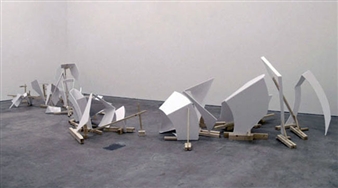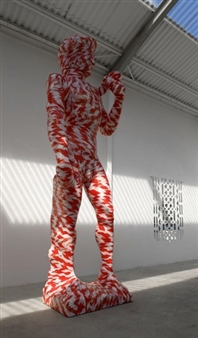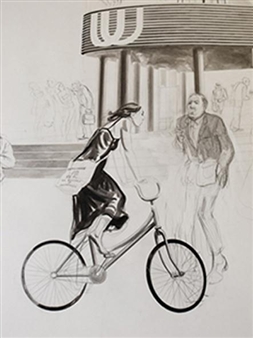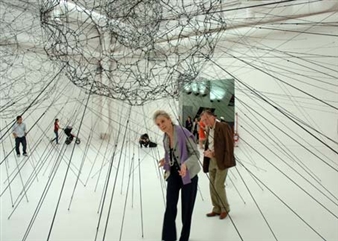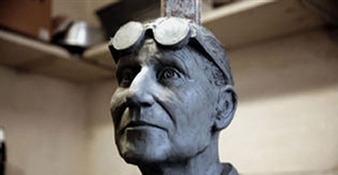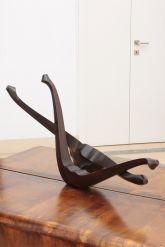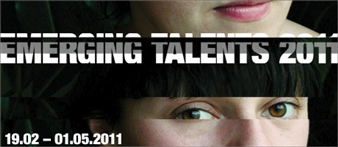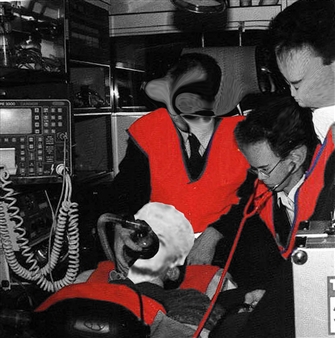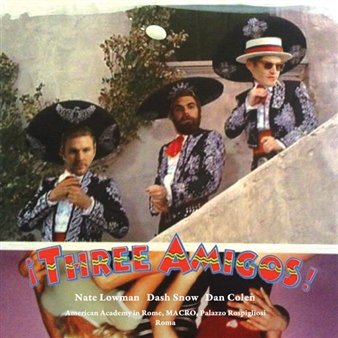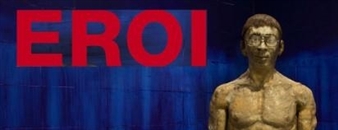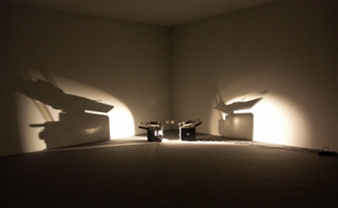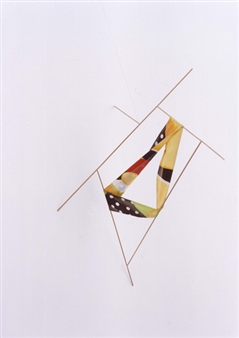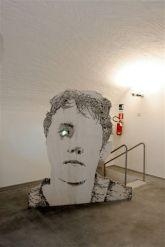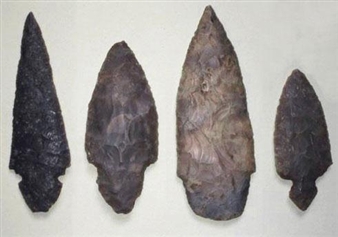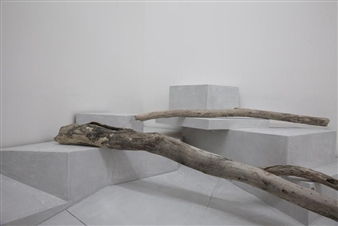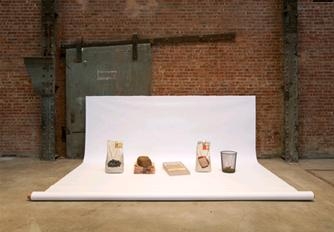Le stanze d'Aragona Cap. III
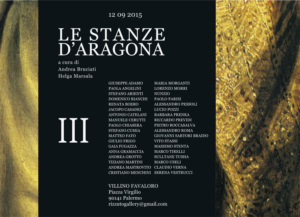
RizzutoGallery, Sicilia, Palermo, 09/15/2015 - 11/14/2015
Via Monte Cuccio, 30, Palermo
hirty-six artists who have joined the project, part of which works by creating ad hoc. Almost all names devoted mainly to painting, belonging to different generations and from different cities and locations: Joseph Adam (Alcamo, Palermo, 1982), Paola Angelini (San Benedetto del Tronto, 1983), Stefano Arienti (Asola, Mantova, 1961) Domenico Bianchi (Rome, 1955), Renata Boero (Genova, 1936), Jacopo Casadei (Cesena, 1982), Antonio Catelani (Florence, 1962), Manuele Cerutti (Torino, 1976), Paul Chiasera (Bologna, 1978), Stephen Cumia (Palermo, 1980), Matthew Fate (Pescara, 1979), Giulio Frigo (Arzignano, Vicenza, 1984), Gaia Fugazza (Milan, 1985), Anna Gramaccia (Perugia, 1980), Andrea Grotto (Schio, Vicenza, 1989) Tiziano Martini (Soltau, Germany, 1983), Andrea Mastrovito (Bergamo, 1978), Cristiano Menchini (Viareggio, 1986), Maria Morganti (Milan, 1965), Lorenzo Morri (Jesi, 1989), Nunzio (Cagnano Amiterno, L ' Aquila, 1953), Paolo Parisi (Catania, 1965), Alessandro Pessoli (Cervia, 1963), Lucio Pozzi (Milan 1935), Barbara Prenka (Gjakova, Kosovo, 1990), Riccardo Previdi (Milan, 1974), Pietro Roccasalva (Modica , 1970), Alessandro Roma (Milan, 1977), Giovanni Sartori Braido (Mestre, Venice, 1989), Vito Stassi (Palermo, 1980), Massimo Stenta (Trieste, 1991), Marco Tirelli (Rome, 1956), Sulltane Tusha ( Durres, Albania, 1988), Marco Useli (Nuoro, 1983), Claudio Verna (Guardiagrele, Chieti, 1937), Serena Vestrucci (Milan, 1986).
Artists widely recognized at international level, in some cases already historicized, alongside the new generations, representing the direct or indirect references: a way to draw lines of continuity or divergence, identifying processes of germination intellectual and visual. "The abstraction guide the trajectory of the project, but not the exhausts. So artists are present for which the processing of the world passes through fluid shapes, geometric, rhythmic, gestural or of signs, analytical or synthetic. Artists at the same time exceed, in many cases, the most icy formalism, reaching an epiphany visual made of vibration and osmotic exchanges between the nature, the time and the space, between objects and their traces, as between the surface size epidermal and the process of painting as alchemical processing, cosmological, perceptual or spiritual. Radical abstraction, then, but also symbolic and formal.
Likewise, the work around abstraction meets individual searches that include references to the figurative, but always in a key brain, highly conceptual. Are excluded, for coherence and critical direction, all those who choose the research or romantic fiction, realism or fantasy story, or even the political and social survey. The painting, finally, is
read here in its strictest form, even traditional (painting-painting), but also in the experience of hybridization with other languages - from sculpture to architecture, through video and installation - placing more as attitude, vocation, eye focus and thought. " [Andrea Burned and Helga Marsala]
In a time when Italy recovers the language of painting as a practice à la page, the exhibition starts from the need for wide-ranging analysis, including reflections aesthetic, cultural, language and system.
"The great tradition of Italian painting, the last part of the century is not sufficiently rewarded by the international context, remains a reality around to recover consciousness and build dynamics of thought, intellectual inquiry, and also of conveying the institutional market. That painting is one of the greatest expressions of Italian culture, in dialogue with the international events, remains the focal point. Reigniting a debate on thick contemporaneity, the recent art history, future directions to imagine a present and shaken by radical changes. "[Andrea Burned]
For More Information